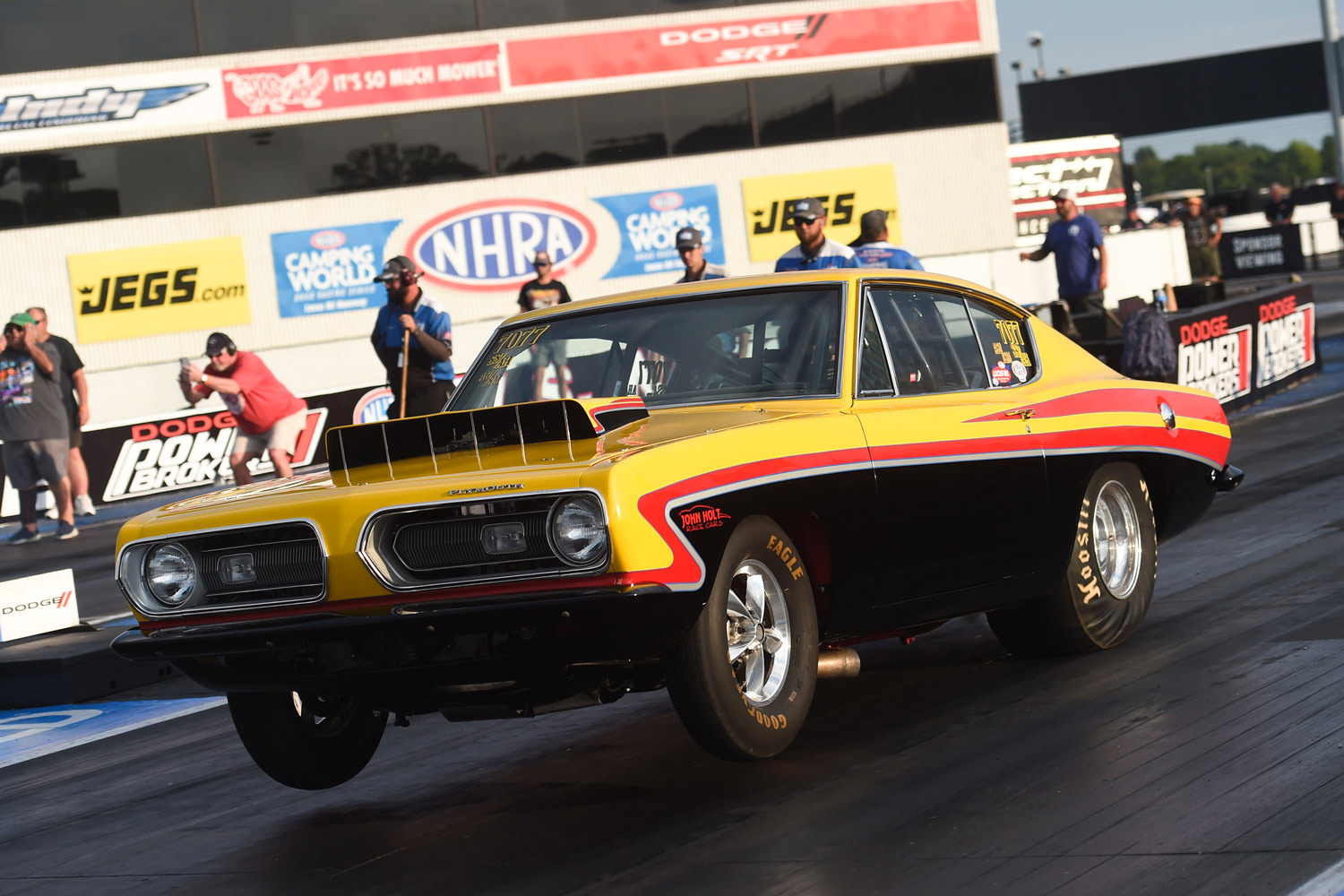Muscling In: Why Muscle Cars Are Still Red-Hot Rides
The muscle car market started to slow down a few years ago, but took off again in the wake of the pandemic. Here's why, and how.
 Dodge
Dodge
Vintage muscle cars are having a moment. It may seem odd that these big, heavy, profligate, honking V8-powered, rear-wheel-drive, American coupes from the 1960s and ’70s are gaining popularity in a time defined by rising energy prices, increasing environmental awareness, and a profound shift toward electric vehicles. But it is happening. In a big way.
“We have an index that we produce called the Hagerty Muscle Car Index, and it is at an all-time high,” said Brian Rabold, vice president of automotive intelligence for Hagerty, the data and analysis wing of the specialty vehicle insurance and editorial behemoth. “Over the last 12 months, it's gone up 44%. Year to date, it's up 7%. So, really strong gains.”
While those figures are reflective of the top of the muscle car market — cars with average values of $400,000 or so — similar trends are occurring everywhere in the category. According to
The Pandemic Turned ‘Someday’ Into ‘Why Not Now?’
As with many things in our contemporary landscape, this is in no small part a result of existing trends that were superheated in response to COVID-19.
“Since the pandemic started, people have reevaluated priorities. So, a lot of folks who might have seen a purchase of a collector car as something they were going to wait on until it was more practical, time has changed their opinion,” Rabold said. “It’s kind of the ‘life is short; you only live once’ phenomenon.”
These buyers, wanting to take charge of their joy, are seeking visceral and experiential engagement, and muscle cars offer this in buckets.
“When you get into a muscle car and you turn it on, you feel it inside you,” Rabold said. “It's an emotional experience.”
And their eminent drivability speaks to the contemporary desire for cars that can be used and enjoyed, rather than just polished and displayed.
Generally, the cars about which people dream during their youth become the vehicles they purchase when they find themselves with enough disposable income. Witness the rising interest in cars of the ’80s and ’90s fueled by the enhanced purchasing power of Gen Xers and millennials. Intriguingly, muscle cars break this mold and transcend their roots in Baby Boomer culture.
From the Glory Days of American Automakers
According to Rabold, this is due to a few different factors. First, muscle cars are ubiquitous. Hundreds of thousands were produced in different trim levels, from the ordinary to the exceptional, so they’re easy to find, and they exist at every price point.
“You can get on Craigslist, or you can go drive around through the country and probably find an interesting car with a ‘for sale’ sign in the front yard,” Rabold said.
Second, muscle cars have a highly recognizable and compelling style. This is derived from a performance-oriented moment in American automotive history, predicated on the appealing menace of aggressive design and equally aggressive engine outputs, in the pinnacle years before rising gas prices and new safety and emissions regulations shifted consumer needs and throttled domestic manufacturers that were unprepared for a changing market. These cars thus represent the so-called Big Three’s final moment of American market dominance prior to competition from more nimble, more efficient, higher-quality imported vehicles. This imbues muscle cars with a nostalgia—like that for mid-century modern furniture, or Art Deco skyscrapers—that feels more universal than generational.
As Rabold said: “Muscle cars have become part of pop culture for a long time.” Despite dating back more than five decades, muscle cars are still part of contemporary video game culture in games like Need for Speed or Grand Theft Auto, and part of movie culture in franchises such as Fast & Furious, exposing younger generations to their allure.
Inclusivity vs. Exclusivity
Additionally, muscle cars don’t abide the orthodoxies of the collector car market, which currently privileges undisturbed originality. Like the modified Plymouth from the Dodge Hemi Challenge pictured atop this story, you’re likely to see these modified cars driven much harder than the average vintage collector car.
“Modifying your muscle car has always been part of ownership. Even from new, people would buy these cars and instantly add go-fast parts. So that's just part of their appeal,” Rabold said. “They’re easy to work on and to modify. And modified muscle cars are probably more common, and often more valuable, than unmodified ones.”
Muscle cars’ approachability also enhances accessibility. While many buyers may already be priced out of top-performing examples like first-generation Pontiac GTOs or Plymouth Barracudas, there are plenty of other second- or third-tier vehicles to choose from. First-generation Dodge Dart GTs, Mercury Cougars, Ford Torinos, and Plymouth Belvederes, among many other options, provide access.
If current trends follow—always a big “if”—the values of these cars should retain plenty of potential upside.
“Three years ago, we were sort of wondering what is going to happen to the muscle car market,” Rabold said. “And the idea that those values would be up by a third a year, two years later, seemed pretty unlikely. But here we are.”
Which means you haven’t missed your window. Start trolling your local online or print classifieds, or the side streets in your neighborhood for your own muscle car, and get ready to do some smoky burnouts.
Written by humans.
Edited by humans.
 Brett Berk
Brett BerkBrett Berk is a New York City-based writer who covers the intersection of cars and culture: art, architecture, books, fashion, film, politics, television. His writing appears regularly in top-tier automotive and lifestyle publications.
Related articles
View more related articles